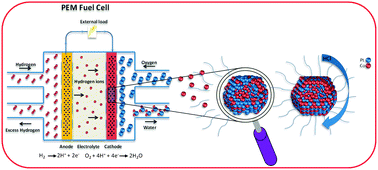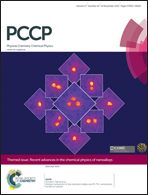Structural disordering of de-alloyed Pt bimetallic nanocatalysts: the effect on oxygen reduction reaction activity and stability†
Abstract
Platinum bimetallic alloys are well-known for their ability to catalyze the oxygen reduction reaction (ORR) in proton exchange membrane fuel cells (PEMFCs). PtxCo1−x colloidal nanoparticles were synthesized with varying initial Pt : Co ratios, but constant size to investigate how the initial metal composition affects their electrocatalytic performance. The results show that upon contact with acid environment the Co leaches out of the particles leading to almost identical compositions, independent of the initial differences. Surprisingly the data show a clear trend in ORR activity, although the PtxCo1−x nanoparticles almost completely de-alloy during acid leaching, i.e. under reaction conditions in a fuel cell. To scrutinize the resulting particle structure after de-alloying we used pair distribution function (PDF) analysis and X-ray diffraction (XRD) gaining insight into the structural disorder and its dependence on the initial metal composition. Our results suggest that not only the ORR activity, but also the corrosion resistance of the synthesized NPs, are dependent on the structural disorder resulting from the de-alloying process.

- This article is part of the themed collection: Recent advances in the chemical physics of nanoalloys

 Please wait while we load your content...
Please wait while we load your content...